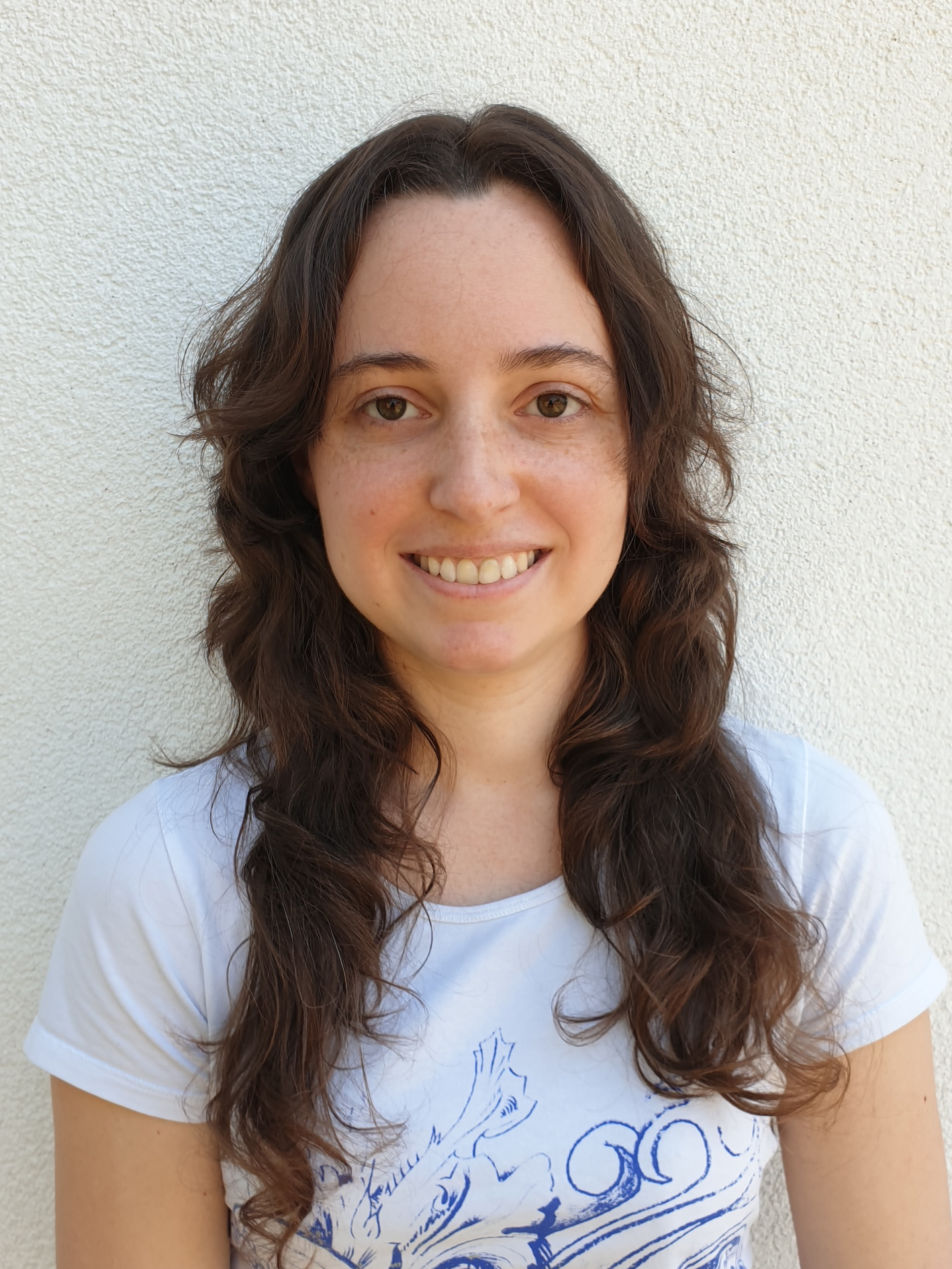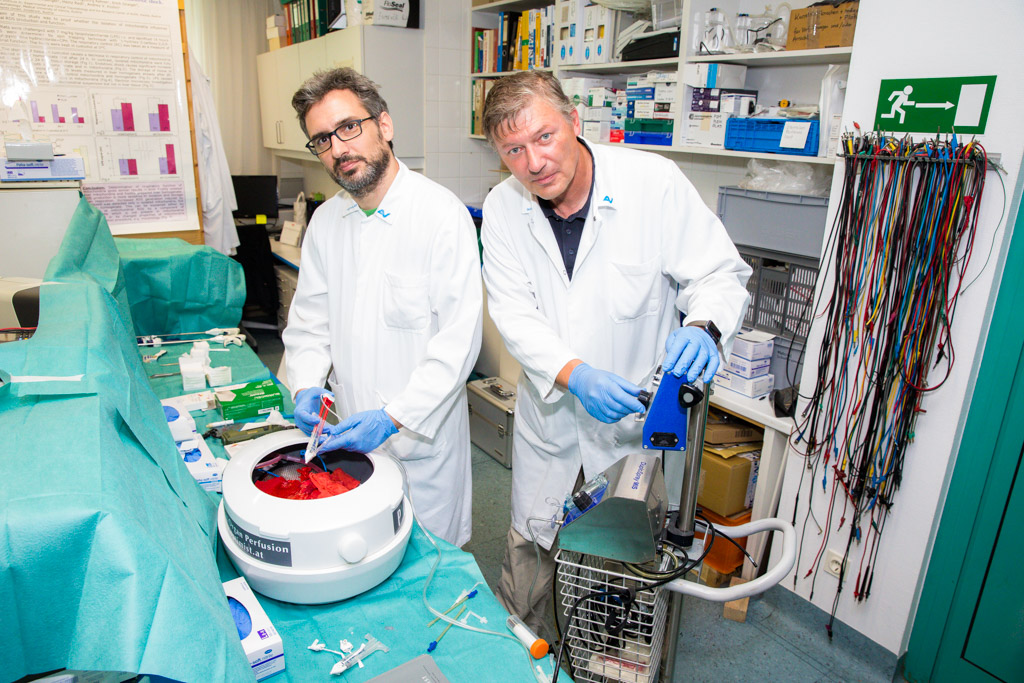Going into research without a degree
Science as a dream job – for many it seems to be inseparably linked with a tedious degree and a list of titles in front of and/or behind the name. Michaela Stainer and Karl Kropik from the Ludwig Boltzmann Institute for Traumatology, the research centre in cooperation with AUVA, report that there is another way.
Michaela is actually a qualified kindergarten teacher. After her training, she reorientated herself and started studying biomedical analysis. The first semester was to be her last, but the love of working in the lab wouldn’t let her go. The college at the HBLVA for Chemical Industry in Rosensteingasse gave her an education with a high level of practical relevance, with “chemistry in all facets”, as she describes it today. She finally completed her compulsory internship at the LBI Trauma in the shock team – and has now been part of the institute for 11 years.
It’s been a little longer for Karl Kropik. He graduated from the HTL for Communications Engineering, Electronics and Biomedical Engineering at the TGM in the 20th district before he heard about a vacancy at the Institute through a schoolmate in 1990. Since then, he has been taking care of the numerous devices at the Institute. In addition, he was involved in research projects right from the start. Monday: first day at work, Thursday: heart volume measurements. If you are “ned deppad” (quote Karl), i.e. skilful and open to new things, there is always something to do and a lot to learn at the Institute.
—
During her internship, Michaela was also able to get to work quickly, work independently and think on her own feet. A new method had to be adapted for a new research project: Searching for standards, calibrating, validating. Michaela was able to really “reintigrate” herself into the literature and successfully set up a new protocol, which was then used in the project.
After the internship, she moved to the molecular biology group and specialised in the polymerase chain reaction, better known as PCR. Scientists at the Institute turn to her whenever they are planning PCR evaluation in their project, for example for gene expression analyses (in which it is determined which gene sequences are currently being actively transcribed and converted ). In joint meetings, Michaela gives tips on sample collection. She then carries out RNA isolation and PCR herself. She also designs primers (start sequences) for failed markers.
“What is great about us is that from the moment you show that you want it, they let you. You can learn the ropes, you can prove what you can do and you are rewarded for it,” Michaela describes her work. She was able to prove her motivation and initiative once again last year. When the labs were cleared in March 2020, she used the time in the home office to follow the rapid developments in the field of COVID diagnostics. Soon, she asked the head of the institute, Prof. Johannes Grillari, to be allowed to validate tests herself. Then everything happened very quickly: the test was established, validated, certified. A few weeks after the lockdown had begun, the Institute started testing with a team of volunteers, staff and patients. To this day, PCR tests are carried out under Michaela’s leadership.
Pipetting tiny volumes is not for Karl. “Chemistry was never mine,” he explains. He appreciates working on musculoskeletal research projects: cruciate ligaments and cartilage grafts, bone screw fixations. “You have something in your hand there.”
He demonstrated particular dedication and dexterity when working with fibrin glue, a biological two-component adhesive made from blood clotting factors. “At some point I said to myself: ‘It can’t be that hard’ – And I sat down and worked on it.” He learned a lot about the different products, the do’s and don’ts when dealing with fibrin glue, through research but above all through trial and error. From spray application to laparoscopic use – Karl knows his stuff. He has already been able to pass on his knowledge in training courses.
—
What about appreciation in an academically dominated field? Michaela and Karl agree: even if they had to work for it at the beginning, the respect is there. Respect for their countless years of experience, for their broad perspectives (as technicians they have insights into almost all research groups) and for their successful collaboration.
“Karl is an integral part of the smooth running of our studies,” says the head of the cartilage regeneration group, Prof Sylvia Nürnberger, “He contributes very constructively with his practical thinking.” I often hear from our cooperation partners: “I hope Karli is around?” Thanks to his uncomplicated, open personality, he is welcome everywhere.
It’s hard to imagine the day-to-day running of the Institute without Karl and Michaela, as they have the best overview of all the tools, equipment and chemicals. Karl describes it casually: “I’ve been with the institute for so long, when someone is looking for something at the institute, they come to me, because I know what’s in almost every drawer.” Michaela is also the contact person for many things. “Ask Micha, she knows,” you often hear in the Institute’s coffee kitchen. When I ask Michaela about it, she has to smile. “When I enrol new students, I always show them tricks of the trade. If they do it the way I demonstrate, the experiment just works. They all appreciate that.”

